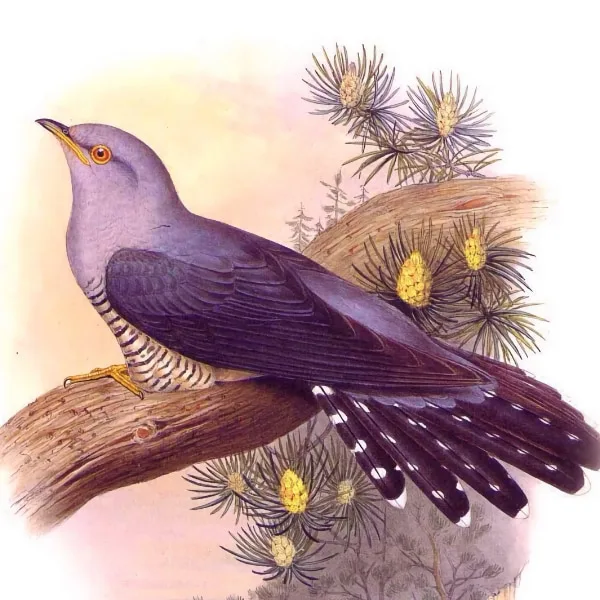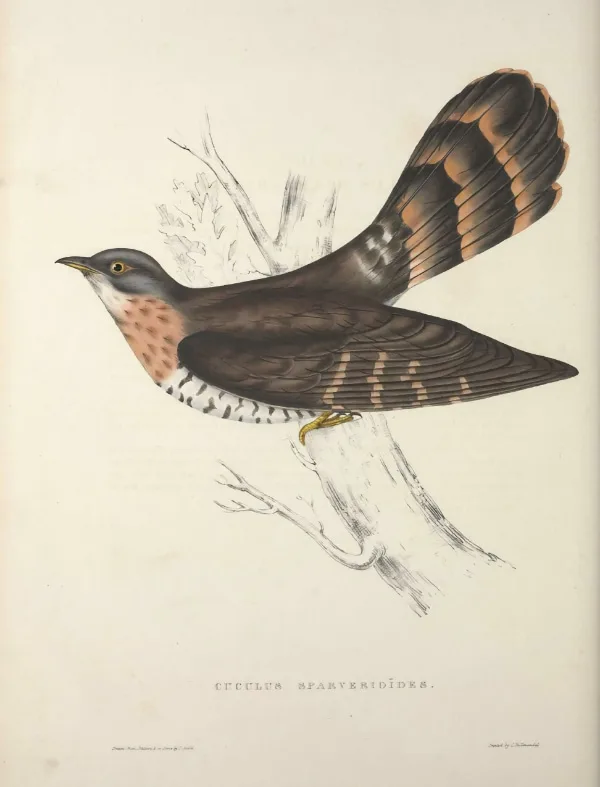Folktales have long served as a way for cultures to pass down warnings, wisdom, and explanations for the natural world. Many of these stories involve transformation, justice, and supernatural interventions. One such tale is “The Story of the Little Boy and the Wicked Stepmother,” a haunting narrative that blends themes of betrayal, survival, and metamorphosis. At the heart of this legend is a familiar bird, the cuckoo, which has played a significant role in folklore across various cultures.
The story
Once upon a time, there was a poor man who had a wife and two children, a boy and a girl. He was so poor that he possessed nothing in the world but the ashes on his hearth. His wife died, and after a time, he married another woman, who was cantankerous and bad-natured. From morning till evening, she gave the poor man no peace, snarling and shouting at him.
The woman said to him, “Do away with these children. You cannot even keep me – how then can you keep all these mouths?” For was she not a stepmother?
The poor man endured her nagging for a long time, but one night, she quarreled so much that he promised to take the children into the forest and leave them there. The two children sat in the corner, listening quietly to all that was going on.
The next day, the man took his axe upon his shoulder, called the children, and said, “Come with me into the forest; I am going to cut wood.” The little children followed him, but before they left, the girl filled her pocket with ashes from the hearth, dropping little bits along the way as they walked.
After a time, they reached a very dense part of the forest, where they could no longer see their way. There, the man said, “Wait here for a while. I am only going to cut wood yonder. When I have done, I will come back and fetch you home.”
Leaving the children in the thicket, he walked away, heavy-hearted, and returned home. The children waited for a while, but when their father did not return, the girl understood what had happened. They slept through the night in the forest, and the next morning, she took her brother by the hand and followed the trail of ashes she had left on the road, leading them back to their own house.
When the stepmother saw them, she nearly lost her mind with fury. If she could, she would have swallowed them in a spoonful of water. The husband, a weak-willed man, tried to pacify her and find another way to remove the children, but he did not succeed. When the stepmother realized she could not get rid of them through her husband, she resolved to take matters into her own hands.
One morning, when her husband had gone away, she took the little boy and, without a word to anyone, killed him. She then gave the body to his sister, commanding her to cut it up and prepare a meal for the household. The girl had no choice – if she refused, she too would be killed.
So she cut him up and cooked him for the evening meal, but she took his heart and hid it in the hollow of a tree. When the stepmother asked her where the heart was, she lied, saying that a dog had come and taken it away.
In the evening, when the husband came home, she served him the broth with the meat. He ate it, as did the wicked stepmother, never knowing it was the flesh of his own child. The little girl, however, refused to eat a single bite. After the meal, she gathered all the bones and placed them in the hollow tree where she had hidden the heart.

The next morning, from that hollow tree, a small bird with dark feathers emerged. It perched on a branch and began to sing:
“Cuckoo! My sister has cooked me,
And my father has eaten me,
But I am now a cuckoo,
And safe from my stepmother.”
When the stepmother, who happened to be near the tree, heard the bird’s song, she flew into a rage. In her fury and fright, she grabbed a heavy lump of salt and threw it at the cuckoo. But instead of hitting the bird, the lump fell back onto her own head, killing her on the spot. And the little boy has remained a cuckoo ever since.
The bird behind the tale
The cuckoo is the central figure of this transformation tale, and its presence in folklore is deeply rooted in cultural interpretations of fate and justice. The species most often associated with these myths in Europe is the common cuckoo (Cuculus canorus), known for its haunting call and brood parasitism, which may have contributed to its symbolism of trickery, deception, and lost souls.
In this story, the child’s transformation into a cuckoo reinforces the theme of rebirth, echoing long-standing beliefs that cuckoos represent wandering spirits or messages from the afterlife.

Interestingly, an illustration of the large hawk-cuckoo (Hierococcyx sparverioides) was historically associated with an older version of this tale. Although this species is native to Asia and differs in behavior, it shares similar vocal traits and visual resemblance to small hawks, which might explain its occasional connection to cuckoo folklore.
Whether in Europe or Asia, cuckoos have remained enigmatic figures in mythology, embodying themes of sorrow, fate, and transformation across cultures.
Cultural and historical context
This folktale shares elements with the famous Grimm Brothers’ story “The Juniper Tree,” in which a murdered boy is reincarnated as a bird to expose his killer. Stories of stepmothers mistreating children are common across cultures, often reflecting real-life fears about orphanhood and blended families. In this case, the father’s passivity and the stepmother’s cruelty highlight themes of helplessness and retribution.
The use of ashes as a trail echoes “Hansel and Gretel,” another tale about abandoned children navigating a hostile world. These recurring themes suggest deep-rooted anxieties about survival, morality, and justice.
Other cuckoo myths
Beyond this tale, cuckoos have appeared in myths and folklore across many cultures, often linked to fate, transformation, and omens. In some traditions, the cuckoo’s call is considered an omen of death or bad luck, while in others, hearing the first cuckoo of the year is believed to bring good fortune.
The cuckoo’s habit of laying its eggs in other birds’ nests has also contributed to its reputation as a symbol of deception and trickery.
In Slavic folklore, the cuckoo is frequently associated with the souls of the departed, much like in this story, where the boy returns as a cuckoo after his tragic fate. Legends from various regions have connected the cuckoo to themes of grief, prophecy, and even love, often portraying it as a messenger between the living and the dead. These stories barely scratch the surface of the cuckoo’s mythological significance.
Across different cultures, this enigmatic bird has been seen as a bringer of prophecy, a symbol of transformation, and even a messenger of fate. To explore more of these fascinating beliefs, see our deeper dive into cuckoo bird meaning and symbolism.
